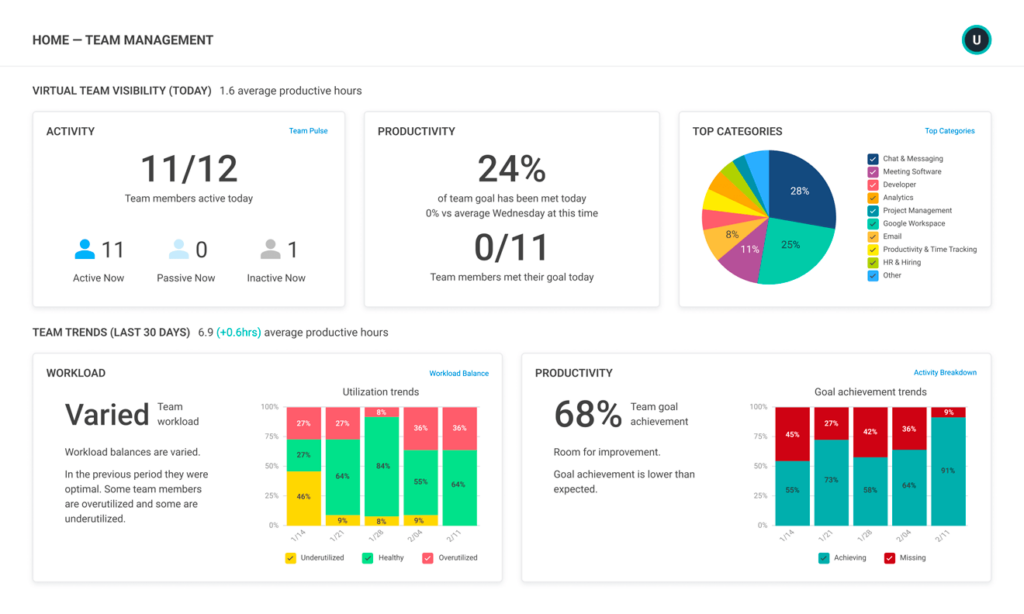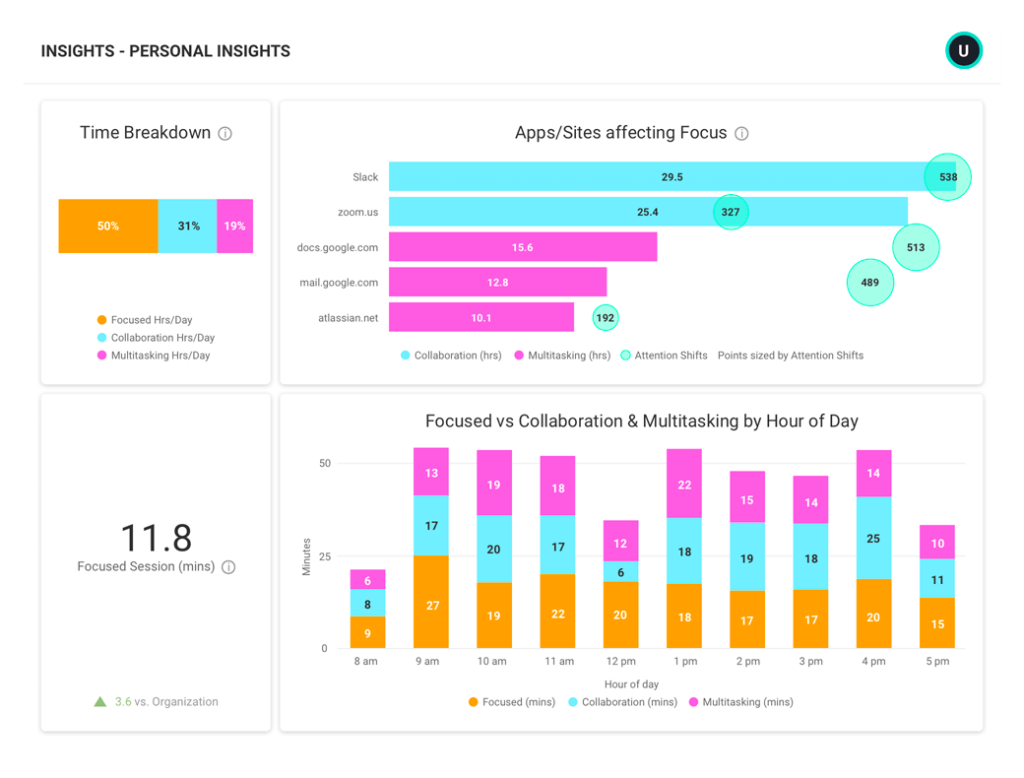Improve productivity and amazing results will follow. At least, that’s what the research indicates. Studies have long shown that companies with high levels of productivity experience better retention, greater customer engagement and higher profitability.
However, it’s not your overall company’s productivity that makes a difference. Some of the most impactful activities happen at the team level. Which is why, as a business leader, you need a clear understanding of team productivity — what it is, why it’s important and how to measure (and improve) it.
What is team productivity?
Team productivity is the total output of work from a specific team. It measures how much a group of employees produces in a set amount of time, as well as how well they do it. To assess a customer support team’s productivity, for instance, you’d look at the number of tickets closed alongside customer satisfaction scores.
Team productivity goes beyond individual team members’ performance to focus on how well everyone works together toward shared goals. It relies heavily on teamwork and collaboration to improve results for the organization at large.
How to measure team productivity: 5 different ways
While the basic formula for calculating team productivity is straightforward, successfully benchmarking and measuring it is anything but. The good news? Once you get used to assessing and addressing team productivity, those measurements become second nature. And with the latest developments in productivity management software, you can automate much of the work.
Here are five of the most common methods for measuring productivity at the team level.
1. Productivity measurement software
The simplest, fastest way to measure team productivity is with productivity management software such as ActivTrak. This platform analyzes activities across teams and departments and delivers findings in easy-to-understand dashboards.
Using team productivity dashboards allows you to see how much time employees spend on different activities, both at the individual and team level. It shows you the total hours that go into getting a job done, as well as how work is distributed across team members. Better yet, you’ll see how productivity levels change based on where people work — a reliable method for measuring remote work against in-office collaboration.
If you want a high degree of accuracy, productivity management software is ideal. These tools automatically collect and analyze employee activity data for you — no manual calculations involved.

2. Manual productivity tracking
If you prefer to calculate productivity yourself, you’ll need to maintain spreadsheets and conduct manual analysis. Some of the most common methods include:
- The basic productivity formula: Divide output (what your team produced) by input (what team members did, or which resources they used, to achieve that output). So if it took 100 hours for your IT team to resolve 80 help desk tickets, the calculation would be 100/80 = 1.25 hours per ticket.
- The planned-to-done ratio: Measure the amount of completed work and compare it to the amount originally assigned to your team.
- Cycle time metric: Measure the amount of time it takes to complete a team project from start to finish.
While these productivity measures provide a baseline for understanding team productivity, they won’t tell you the full story — such as why it took longer to complete less work than anticipated. You’ll need to incorporate other methods to answer those underlying questions.
3. Surveys and 360-degree feedback
To use surveys and 360-degree feedback, ask team members to rate each other in areas related to team productivity. Do employees show respect for each other? Do they understand team goals? Do they motivate one another? Sending out regular surveys will help reveal the answers to these questions and others like them.
However, it’s important to note this data may be skewed based on limited responses of personal preferences. Team members may give high ratings to employees they work closely with and mark others lower on the scale, simply because they haven’t had the opportunity to collaborate with them yet.
4. Progress toward team goals
This method works well for teams with clearly defined goals and timelines. Start with the number of objectives your team set at the start of the month, quarter or year. Then calculate the percentage completed when your specified period ends. If your marketing team set a goal to create 10 new landing pages and ended the quarter with 9, this calculation tells you the team reached 90% of its goal.
When combined with surveys and 360-degree feedback, this method will help you see how different team dynamics impact results. It also helps you understand when it’s time to change course. A team that repeatedly falls short of goals may need to get better at collaborating — or they may be overworked and need your help redistributing unbalanced workloads.
5. Focus time vs distractions
Another way to measure team productivity is to look at how team members spend their time. Why? Because while collaboration is key, not all team performance happens when everyone’s in the same room. For employees to be successful together, they must first devote individual time to critical thinking and deep work.
Start by calculating how much time your team spends in meetings. Then look at how many of those meetings are unnecessary or ineffective to see if team productivity is suffering as a result. If you use productivity management software, look at website and application usage dashboards to gauge how much time goes to less productive team activities like endless team chats or constant pings which can become distractions. These metrics will help you understand if you need to protect individual focus time, ensuring the time team members do spend together is actually productive.

The importance of measuring team productivity
Team productivity metrics don’t just tell you about your work environment. They also reveal issues individual employee productivity measurement can’t. While it’s tempting to focus on the latter, typically by measuring work hours and time spent on tasks, this criteria doesn’t paint the full picture.
For example, consider the high-performance employee. They’re personally efficient, take initiative, think critically and exhibit high levels of self direction. But do they also work well with others? Can they communicate and collaborate effectively in groups? If you focus solely on individual performance, you may not realize they lack these important team-building skills.
There’s also the issue of “social loafing” to consider. Do your employees put in less effort when working in a group than when working alone? Dozens of studies indicate the answer is likely “yes.” But you won’t know for sure — let alone what’s causing it or what to do about it — if you don’t measure team productivity.
Plus, studying and improving team productivity is good business sense. New hires who collaborate with coworkers from day one are at least 65% more likely than their isolated peers to stay long enough at a company to become productive and profitable. And according to academic research, finding ways to encourage positive team-building leads to significantly higher financial performance, customer satisfaction and employee engagement.
Measure team productivity with ActivTrak’s award winning software
Ready to measure team productivity at your organization? ActivTrak is here to help. Our award-winning productivity management platform provides the insights you need to enhance employee engagement, performance and well-being at your organization. More than 9,500 customers use it to:
- See how teams progress toward daily productivity goals
- Compare current progress to past productivity trends
- Balance workloads across team members
Request a demo for a behind-the-scenes look at ActivTrak’s team management dashboards and learn how you can start tracking team productivity today.





